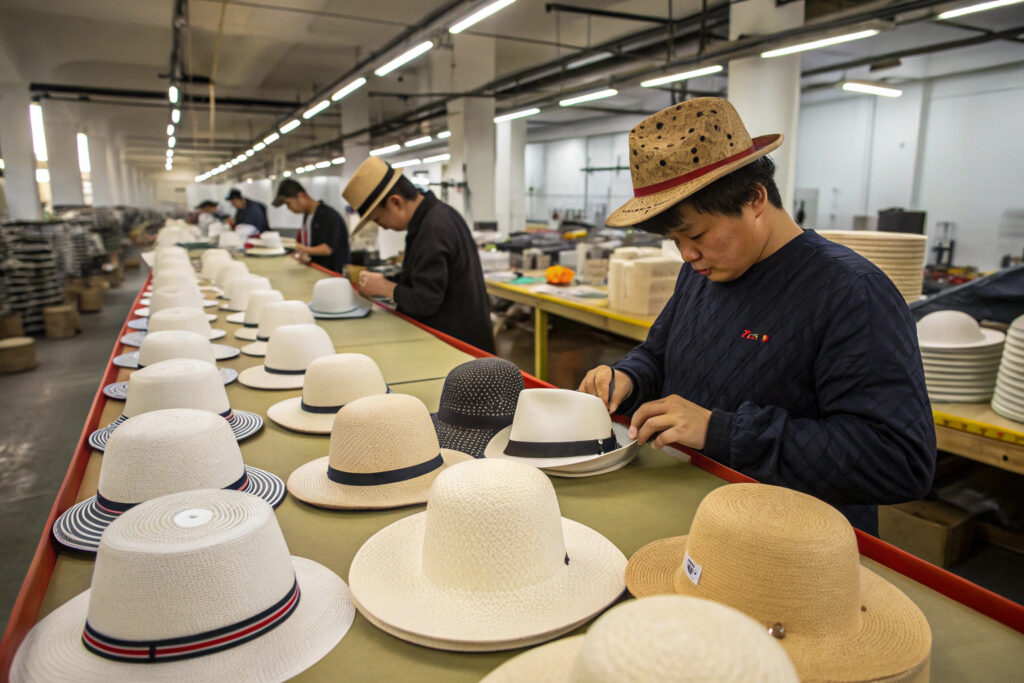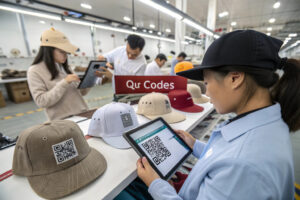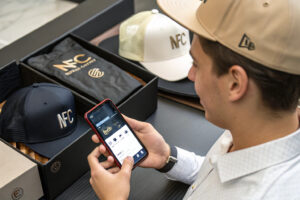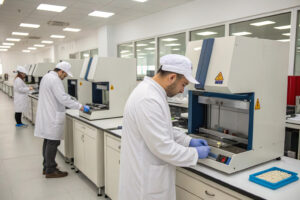Every time Ron or any of our buyers asks, “When can I have my custom hats ready to ship?” I know they need a clear and confident answer. But let’s face it—the production timeline isn’t one-size-fits-all. Some orders fly off the line in just two weeks. Others need 10 weeks or more. Why? Because every custom order is a chain reaction—from sampling, materials, and order size to approvals, QC, and logistics.
Custom hat production generally takes between 3 to 10 weeks depending on the complexity of the order, sampling rounds, and supplier readiness.
If you're planning your next inventory launch or prepping for peak season sales, understanding what affects this timeline can help you avoid costly surprises and missed opportunities. Let’s break it all down step by step.
What Is the Typical Timeline for OEM Hat Orders?
OEM buyers expect a clear roadmap when they place a custom order. Whether it’s for baseball caps, bucket hats, or fashion fedoras, knowing the standard production phases helps manage expectations.
On average, OEM hat production takes about 6 to 8 weeks from final artwork approval to port delivery.
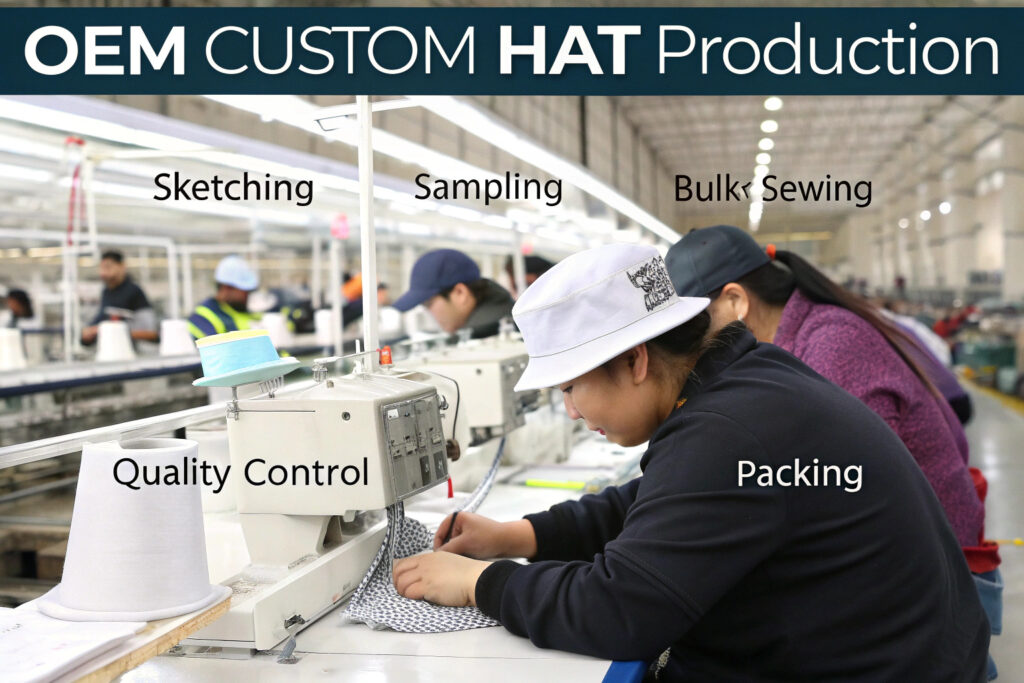
What Are the Standard Stages in Production?
Production typically breaks down like this:
| Phase | Duration | Key Details |
|---|---|---|
| Design Approval | 3–5 Days | Tech pack finalization & trims selection |
| Sampling | 7–14 Days | Lab dip + structure + logo test |
| Bulk Production | 15–30 Days | Material prep, cutting, sewing |
| Final QC & Packing | 3–5 Days | Full inspection & barcode labeling |
| Export + Customs | 7–14 Days | Container booking, clearance, handover |
These stages are standard across the industry. However, experienced factories like ours streamline this process using AI-assisted trend forecasting and pre-stocked trims libraries. For example, platforms like Genovid discuss manufacturing benchmarks, while Design Encyclopedia breaks down timing by product type.
Can Repeat Orders Be Faster?
Yes—if the materials and trims are the same, repeat bulk orders can skip sampling. In these cases, we’ve completed orders in as little as 3 weeks. But timing depends on raw material readiness and factory line availability.
How Do Sampling and Revisions Affect Lead Time?
Sampling is where the timeline can either stay on track—or get derailed. A single round of samples that’s approved quickly can save you weeks. But multiple revisions? That’s when the clock starts ticking.
Each round of sampling typically adds 5–10 days, depending on lab dips, embroidery, and feedback speed.
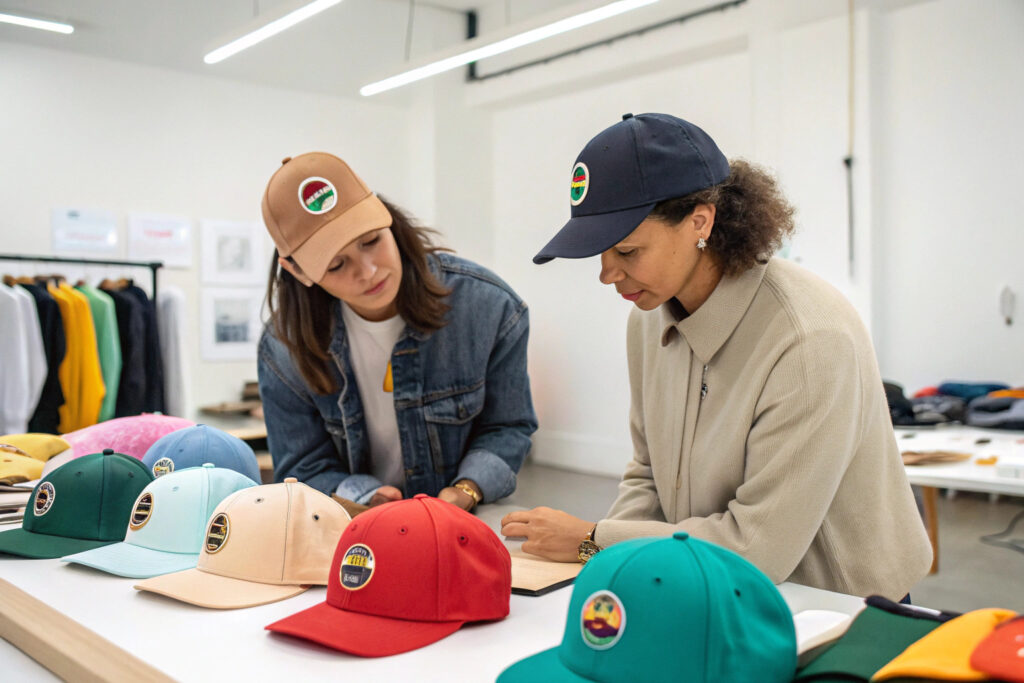
What Can Cause Delays in the Sampling Phase?
Let’s break it down:
- Color Lab Dips: Some brands require multiple dye corrections before approval.
- Logo Application Tests: Puff embroidery or 3D silicone printing needs testing.
- Size & Fit Checks: Bucket hat depth or crown profile sometimes gets adjusted.
Every change resets the clock slightly. As this Saki Ecommerce Blog explains, hats are dimensional items—fit and proportion matter as much as fabric.
How Do We Help Clients Reduce Sampling Time?
At Global-Caps, we prepare sampling in parallel, not linearly. For example, we’ll dye the fabric while developing embroidery tests. This cuts approval time in half. Many clients also benefit from our virtual showroom, where base models can be reviewed digitally before making physical prototypes.
What Slows Down Bulk Hat Production?
Once the sample is approved, many think production is on autopilot—but that’s where hidden bottlenecks can show up.
Production delays usually stem from fabric shortages, high season overlaps, and non-standard design elements.

What Factors Typically Cause Delays?
- Material Lead Time: Unique dyed cottons or imported yarns may require 2–3 extra weeks.
- Overlapping High Seasons: From April–June and Sept–Nov, lines fill up fast.
- Design Challenges: Structured hats with PU panels or complex trims slow the line.
In this Business Plan Template Blog, the author notes that design innovation adds value—but also complexity. We agree. Features like metallic threads or sweatbands with woven logos add precision steps that extend the timeline.
How Do We Avoid These Pitfalls?
- Pre-order raw materials once the sample is 80% approved.
- Use modular sewing setups to allow flexibility across cap styles.
- Offer fabric alternatives with faster lead times.
We also prioritize orders with booked shipping slots, helping avoid last-minute handovers that lead to warehouse congestion.
How Can You Speed Up Custom Hat Manufacturing?
There are ways to move faster—if you plan right and work with the right partner. Whether you're a brand launching for Christmas or a B2B distributor preparing for next year’s collection, you don’t have to wait 3 months for hats.
Fast sampling, repeatable templates, local fabric sources, and pre-approval systems can cut lead times by 30–50%.
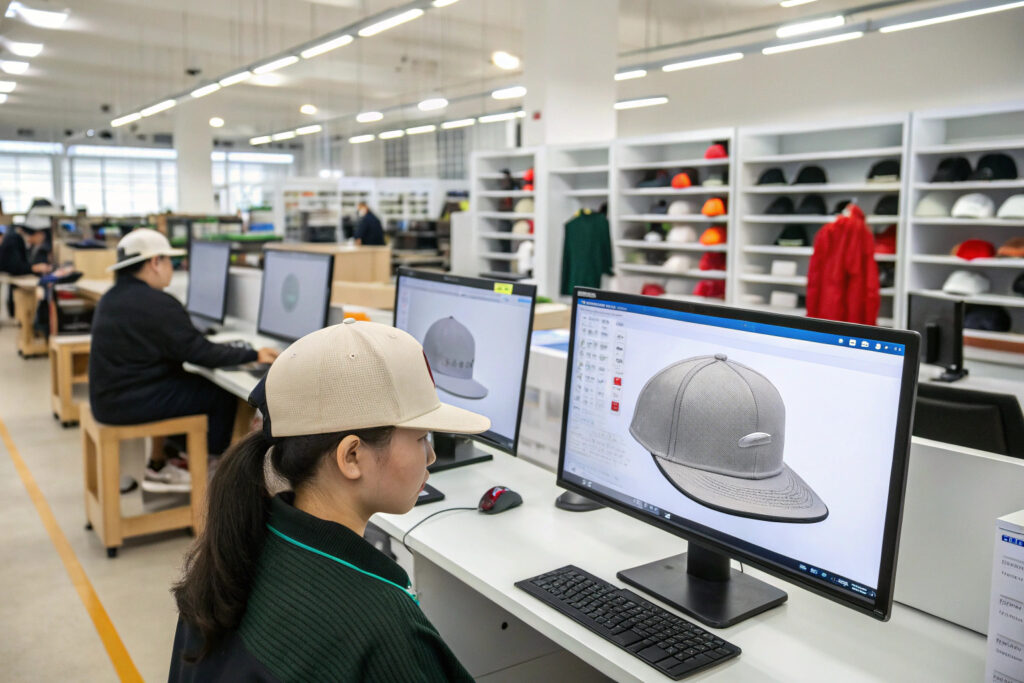
What Tools or Systems Help Speed Things Up?
- Tech Pack Templates: We use standard cap forms so only minor adjustments are needed.
- Live Inventory Access: Our clients see what fabrics and trims are in stock and ready to go.
- Trend Forecast + AI: Our designers pre-load season trends so you don’t need to start from scratch.
Websites like Business Plans Hub also explain how KPIs like sample approval rate and delivery accuracy can help choose a supplier.
What Should Clients Do to Help?
- Confirm logos and sizing during sampling, not post-approval.
- Lock payment terms in advance to avoid order holds.
- Choose in-stock trims to cut sourcing delays.
With 1,000+ hat projects per year, we've found that 70% of late deliveries are due to client-side indecision. We’re happy to work fast—but collaboration is key.
Conclusion
So—how long does custom hat production really take? The honest answer is: it depends. For basic caps with clear design and fast feedback, you can expect 4–6 weeks door-to-door. For complex, high-volume projects with detailed sampling, plan for 8–10 weeks. But with good planning, the right supplier, and solid communication, we’ve seen full custom orders ship in under 21 days.
At Global-Caps, we’re here not just to produce hats—but to co-create timelines that fit your business goals.
